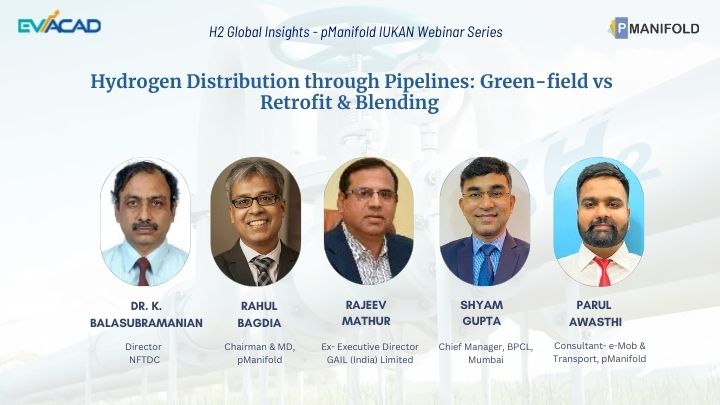Historically, nations have heavily relied on external sources for their energy needs. However, the present era offers a unique proposition – harnessing renewable resources such as solar, wind, and water to produce hydrogen, which can serve as a versatile replacement for traditional fossil fuels like petrol and diesel. This shift towards energy independence is paramount, and H2 plays a pivotal role in this transition. Currently, the world’s H2 demand stands at 90 million metric tons per annum (MTPA), with projections soaring to a staggering 660 MTPA by 2050. To realize the full potential of hydrogen, it is essential to address the economics of H2 production and, equally important, the cost-efficient transportation of hydrogen. Pipelines emerge as a frontrunner in this domain, leveraging the extensive global network of natural gas pipelines, which already span thousands of kilometers. The levelised cost of H2 production from natural gas is estimated at $1 to $2 per kilogram (kg). Of these costs, pipelines are used for longer distances (ranging from 1,500 to 3,000 km), with a cost ranging from $0.09 to $0.47 per kg.
In contrast, medium-distance H2 distribution may favor alternatives like liquefied H2 or ammonia transport by trucks, tube trailers, etc., which cost $0.75 to $1.51 per kg. Importantly, utilizing greenfield pipelines and repurposing natural gas pipelines for H2 transport could save costs by 20-50% and 50-70%, respectively. These statistics underscore the economic advantage of pipeline-based H2 transportation. In countries like India, with substantial natural gas consumption and pipeline infrastructure (15,583 km of gas pipeline network with a capacity of 206 MMSCMD2), it is observed that these pipelines are highly under-utilized and can play a critical role in H2 transportation by blending H2 in pipeline networks. Various studies by GAIL, PIL, and NTPC have found that pipelines can be repurposed for blending at levels of 10-15% with minor modifications. In different countries, such as Australia, the United States, and Canada, demonstration projects are being developed to allow H2 blending in various percentages, ranging from 1% to 20%, showcasing the potential for H2 integration in existing infrastructure. The advantages of transporting H2 through pipelines are evident, with the potential to reduce costs significantly compared to alternative modes of transportation such as trucks.
However, while H2 holds great promise, it presents unique challenges, including its propensity to permeate metal structures and induce cracking. As we delve into the nuances of H2 distribution through pipelines, we will explore these challenges and delve into global best practices, from green-field pipeline development to blending solutions. In conclusion, this webinar with a focus on H2 Distribution through Pipelines: Green-field vs. Retrofit and Blending, aims to pave the way for increased H2 production and economic consumption by addressing critical issues, exploring global best practices, and dissecting the country’s commitment to H2 distribution through pipelines.
The Webinar focuses on:
- Economics of H2 Pipeline – New Vs Retrofit
- Technical & Economic Considerations for Choosing Retrofitting over New Pipeline
- Engineering & Design Consideration for H2 Pipeline
- Investment Required & Viability for H2 Pipeline
- Emerging Policies Landscape to Fuel Investments in H2 Infrastructure
Key takeaways
- We need to view it from both perspectives: as a commodity at a large scale and user/ customer perspective (bird’s ant’s view)
- 3A’s paramount for all developing economies – Affordability, Accessibility, and Availability.
- The pipeline requires the least transportation and fuel consumption, relieving road congestion. Aligns with the National objective of Net zero goals and the cheapest product reaches the consumer.
- In the context of vehicles: if the blending is more than 2%, unburnt H2 leads to cracking.
- Blending H2 with natural gas is a good option
- Pipelines will require a lot of funding, commercial structure, regulatory and policy support
- Indore Pilot: GAIL started injecting grey H2 in the CGD network to establish the techno-commercial feasibility of blending H2. To be supplied to Avantika Gas Limited.
- Higher percentages of blending will require the burners to be changed due to high flames.


